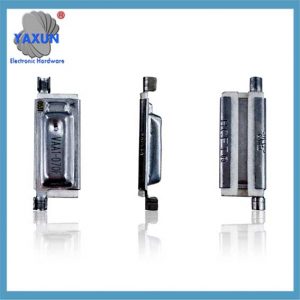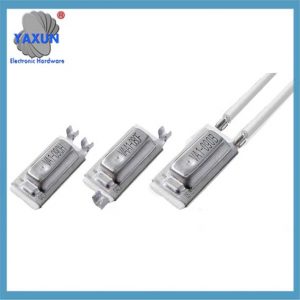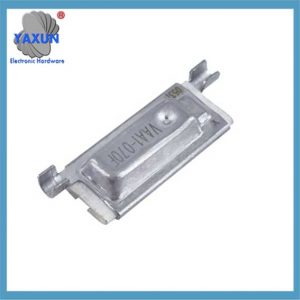速動恆溫器/熱保護器,在我們的所有控制器中具有最高的觸點額定值. 適合使用於 120/240 交流負載. 可提供多種雙金屬元件以增強性能特徵. 選擇蠕變熱保護器需要分析桿擲規格, 設定點溫度, 滯後現象, 最大額定電流, 最大交流電壓額定值, 最大直流電壓額定值, 和開關壽命.
桿和直接規格
單極, 單擲 (單刀單擲) 開關在單個分支電路中建立或破壞單個導體的連接. 他們有兩個終端,通常稱為“單極”開關.
單極, 雙擲 (單刀雙擲) 開關使單個導體與另外兩個單個導體中的任何一個都建立或破壞了連接. 通常稱為“三向開關,SPDT設備具有三個端子,並成對使用.
雙桿, 單擲 (DPST) 開關在單個分支電路中建立或破壞兩個電路導體的連接,通常有四個端子.
雙桿, 雙擲 (DPDT) 開關在兩個單獨的電路中建立或破壞兩個導體的連接. 大多數DPDT開關都有六個終端,並且有瞬間或維護的接觸版本可用.
具有兩個以上極線的蠕變熱保護器被設計為將載荷分為單獨的電路.
蠕變熱保護器設定點溫度
蠕變熱保護器規範指南熱開關和熱保護器的設定點溫度是固定的或可調節的場溫度. 設定點是設備經歷與電觸點運動相關的狀態變化的額定溫度. 定點設備在給定溫度下額定,而現場可調設備則具有可調整設定點的溫度範圍.
蠕變熱保護器滯後
遲滯, 也稱為溫差, 是發生切換的有限溫度範圍. 它旨在防止電路在狀態之間不斷變化. 滯後現象為 0.5 C 通常會啟動 0.5 度超過設定點溫度,並且不會再次更改狀態,直到溫度降至低於設定點溫度 0.5C.
環境溫度: 設備周圍環境的正常或典型溫度.
自動復位: 在出廠預設溫度下自動重置其前觸摸接觸配置的恆溫器.
雙金屬: 兩種膨脹速率分子鍵合在一起的金屬,形成恆溫器的刀片或圓盤.
蠕變動作恆溫器: 帶有雙重刀片的恆溫器,可緩慢地使觸點或慢慢打破觸點.
電流求: 用來描述可預測條件的術語,其中增加的電流應用於恆溫器會導致該設備在其設定點以下的溫度下打開. 這種情況僅存在於正常閉合的雙金屬恆溫器中.
功能溫度: (TF的TF) 參考熱截止, 由IEC標准定義, 在無負荷條件下熱截止的溫度打開電路的溫度. IEC耐受性是 +0 C, -10 C.
保持溫度: (TH或TH) 參考熱截止, 熱截止的最高溫度可以在一段時間內保持額定電流 168 功能小時.
最高溫度: (TM或TM) 參考熱截止, 設備可以在10分鐘內進行的最高溫度,而無需恢復電導率.
最小差異: (也稱為死班) 實際開放和實際的近距離溫度之間的最低學位數量.
電機保護器: 對電流升高和溫度升高敏感的熱保護器.
常閉 (N.C.): 溫度升高時接觸開放.
常開 (不。): 溫度升高時接觸關閉.
一槍: 一個設備, 一旦在預設溫度下激活, 不能重置. 僅在正常封閉的聯繫配置中可用.
額定電流: 設備可以攜帶的最大允許電流.
額定電壓: 應應用於設備的最大電壓.
自我保護者: 一個設備, 打開時, 無論環境溫度如何. 僅在正常封閉的聯繫配置中可用.
快照恆溫器: 具有雙元元件的恆溫器,該恆溫元件在經歷激活條件時捕捉接觸. 這種結構允許負載的干淨破裂.
熱熔斷器: 熱切割是一種電氣安全裝置,當加熱到特定溫度時會中斷電流.
熱截止保險絲: 融化其內部元素以在溫度過高的情況下打開電路的設備. 也稱為熱保險絲, 熱保護器保險絲或熱開關.
熱保護器: 熱保護器是一種內置在電動機中的保護裝置,可提供過度或過度的保護器,如果內部溫度上升到跳閘點之上,則可以斷開鎮流器的電源. 這可以保護電機免於過熱. 開關類型包括自動休息, 手動重置和電阻溫度探測器.
寬容: 允許範圍以上和低於標稱溫度.
 English
English Afrikaans
Afrikaans العربية
العربية বাংলা
বাংলা bosanski jezik
bosanski jezik Български
Български Català
Català 粤语
粤语 中文(简体)
中文(简体) 中文(漢字)
中文(漢字) Hrvatski
Hrvatski Čeština
Čeština Nederlands
Nederlands Eesti keel
Eesti keel Suomi
Suomi Français
Français Deutsch
Deutsch Ελληνικά
Ελληνικά हिन्दी; हिंदी
हिन्दी; हिंदी Magyar
Magyar Bahasa Indonesia
Bahasa Indonesia Italiano
Italiano 日本語
日本語 한국어
한국어 Latviešu valoda
Latviešu valoda Lietuvių kalba
Lietuvių kalba македонски јазик
македонски јазик Bahasa Melayu
Bahasa Melayu Norsk
Norsk پارسی
پارسی Polski
Polski Português
Português Română
Română Русский
Русский Cрпски језик
Cрпски језик Slovenčina
Slovenčina Slovenščina
Slovenščina Español
Español Svenska
Svenska ภาษาไทย
ภาษาไทย Türkçe
Türkçe Українська
Українська اردو
اردو Tiếng Việt
Tiếng Việt



